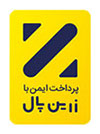Bilingual tots use cues such as pitch or word duration to tell two languages apart.
Babies in bilingual environments can learn to distinguish the grammatical structures of two different languages at a young age, a new study finds.
The research shows that bilingual tots use qualities like pitch and duration of sounds to keep two languages separate.
And infants can perceive these differences between languages at just 7 months. "There are a lot of cues just at the surface level in language that babies can use to get a leg up," study co-author Janet Werker, a psychologist at the University of British Columbia, told LiveScience.
Learning two languages can be challenging, especially when the two tongues have opposite word orders. For example, in English, "function" words (like "the" or "with") precede "content" words, for example: "the dog," "his hat," or "with friends." The content word also has a longer duration when spoken. In Japanese or Hindi, by contrast, the content word ("dog") comes first, and has a higher pitch than the function word ("the"). In most languages, function words occur more frequently than content words.
To understand how infants master languages with different word orders, Werker and colleagues studied 7-month-old infants exposed to English and another language (such as Japanese or Farsi) at home, as well as infants from monolingual homes.
The researchers created a made-up language of 11 words that mimicked the function and content patterns of a true language, where function words occurred more frequently. During the experiments, the babies sat on their mothers' laps and listened to a constant stream of these made-up words.
Half of the babies heard words with differences in duration, while the other half heard words with differences in pitch. All of the babies heard two different "languages" — one in which frequent words came before less frequent words, and the other in which less frequent words came first. [In Photos: How Babies Learn]
The two different languages were broadcast from different parts of the room, and researchers monitored how long the infants spent looking at the source of these sounds. Researchers interpreted a longer gaze to mean the baby was picking up on those differences in word frequency to tell the two fictional languages apart.
The scientists found that bilingual babies looked longer at the source of sounds that matched their expectation of word order, which suggested the infants were using the pitch and duration clues to keep the two languages straight.
For instance when the higher-pitched word came first, a cue that it was a "content" word, the bilingual babies gazed in that direction longer than if that high-pitched word came second. The same occurred for duration, with infants staring longer in the direction of word pairs in which the longer-duration word came second compared to cases in which it came first.
By contrast, monolingual babies showed no difference in looking times; in other words, they didn't pick up on differences in pitch or duration. The results help increase understanding of how syntax, which includes the order of function and content words, is acquired in languages.
The findings also help to debunk the misconception that bilingual infants face disadvantages in language development, according to Werker. "Even though it might look like a more complex task to learn two languages at once," Werker said, "babies do so quite easily."
The research was detailed Feb. 14 in the journal Nature Communications and presented at the 2013 Annual Meeting of the American Association for the Advancement of Science (AAAS) in Boston.

 Persian
Persian  English
English  Arabic
Arabic 


